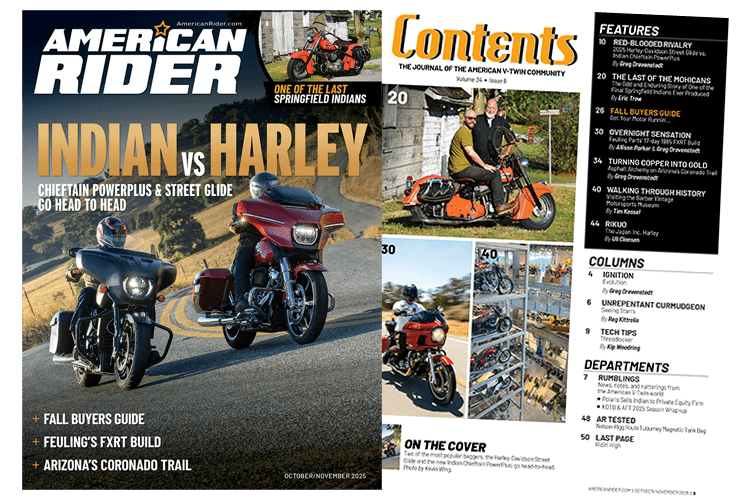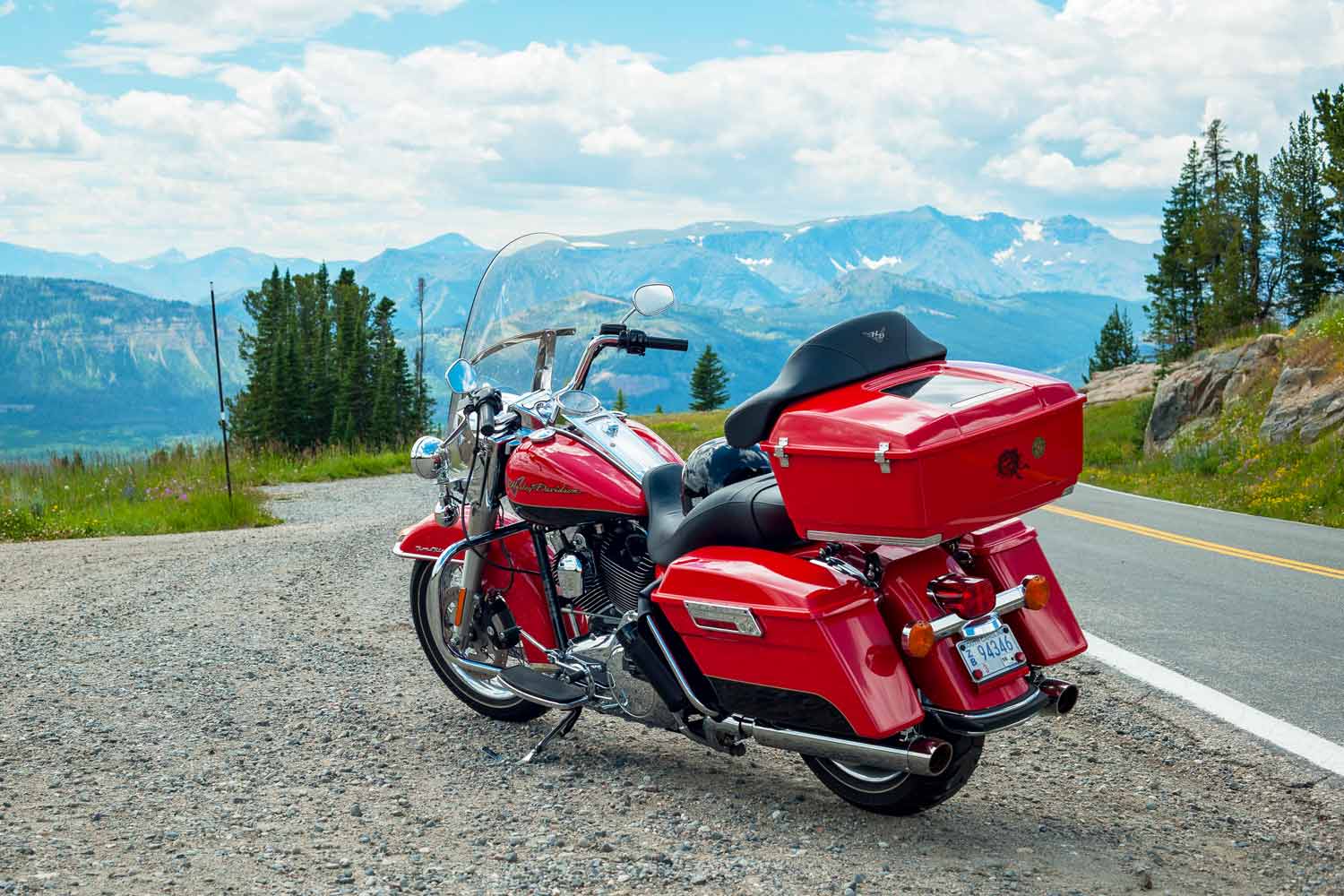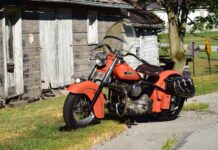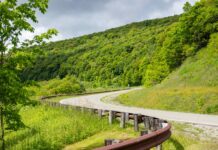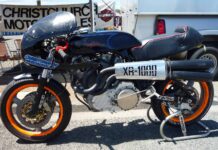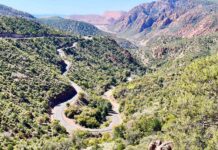Harley-Davidson motorcycles have an enduring appeal to everyone reading this publication. Harleys are more than just motorcycles, they are cultural icons to every red-blooded American, symbolizing freedom, rebellion, and the open road. H-D’s legacy stretches back more than 120 years, and ever since its first V-Twin in 1909, the “potato-potato” soundtrack has been Americana music to our ears.
This rich heritage pulls strongly at our heartstrings, conjuring up ideas of a rugged and adventurous lifestyle behind the handlebars. We dream of rolling down Route 66 on a Knucklehead or crossing the country on a Duo-Glide, harking back to nostalgic roots in America. We sometimes imagine ourselves as one of the cowboys Bon Jovi sang about – “On a steel horse I ride…” – and the pull of everything H-D represents brings us closer to wanting that image when we ride.
But whether due to finances or family commitments or other figurative roadblocks, ownership of a Harley sometimes gets postponed. For Doug Boston, the right time to buy a Harley was delayed for decades. Take a look at Doug’s long road to H-D ownership below. –Ed.
Related: The Long Road to Harley-Davidson Ownership: Ruby, My First H-D
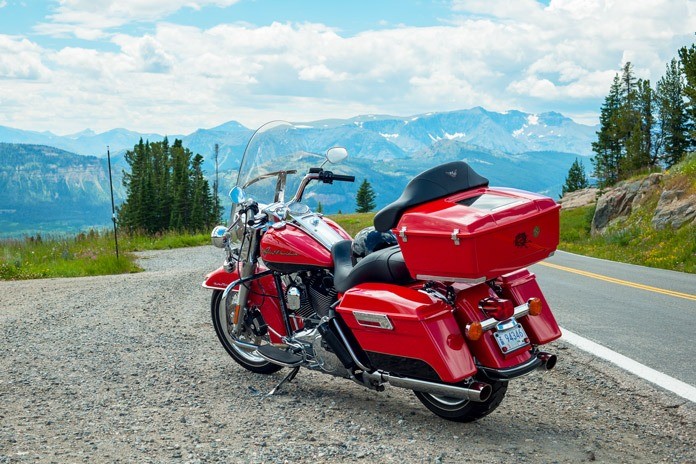
This is a story about my Harley-Davidson Road King. I call her Scarlett. She’s red, but the name is more for the slow Southern cadence by which she conducts her business. It suits her, and she suits me, as I live in Charleston, South Carolina.
In the 1960s, any motorcycle bigger than 500cc was a good-to-go touring bike. At that time in America, Harley-Davidson strode amongst imports like a colossus. Of course, multicylinder Japanese superbikes were beginning to change things, but at the end of the 1960s, Harley still held the displacement title and a headlock on U.S. market share.
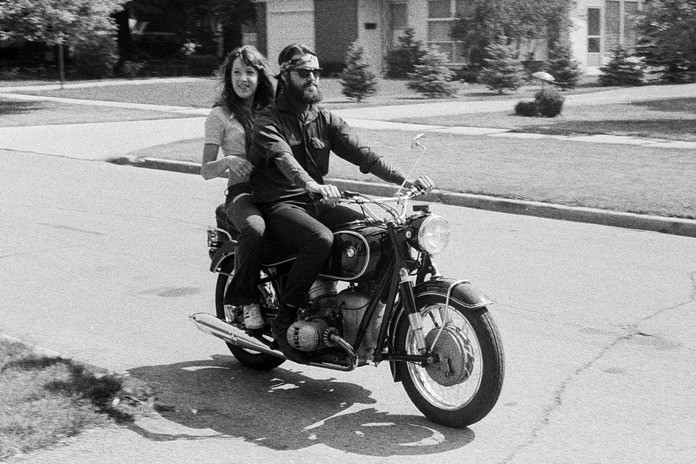
I was just a kid then, staring into the Easy Rider poster on my bedroom wall, building motorcycle models, and flashing peace signs to the longhairs who occasionally passed through my neighborhood on their choppers. On Wednesday evenings, you’d find me sitting cross-legged in my pajamas and watching Michael Parks of Then Came Bronson searching for TV truth aboard his red Sportster.
One hot summer day in 1970, my uncle and his college girlfriend stopped by our house in the suburbs of Chicago on a BMW /5. They were hippies or yippies or both. Uncle Kenny stood 6-foot-5 with long dark hair, a ruddy complexion, and a deep booming voice. Me and the neighborhood kids crowded around the outside of our half-open kitchen window and pressed our noses against the screen just to get a gander of them sitting at our kitchen table.
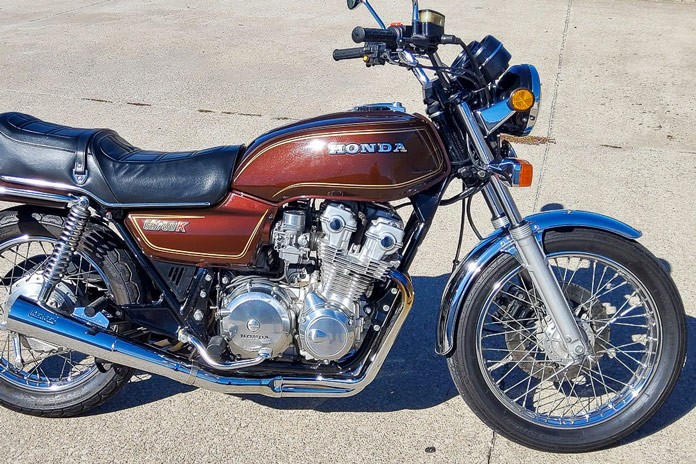
Kenny’s girlfriend had smart eyes and a wide mouth. Bright and liberated women went braless then, and seeing her in a black T-shirt that said “Harley-Davidson” across her chest sent my hormone-addled brain into overdrive. An indelible brand stamp was made upon me that day.
But it wasn’t just Harleys that caught my imagination, it was everything on two wheels. American, British, Japanese, Italian; 4-strokes, 2-strokes, Singles, Twins, Triples, Fours – it didn’t matter. I devoured every motorcycle magazine I could find, and many hours were devoted to daydreaming about motorcycles.
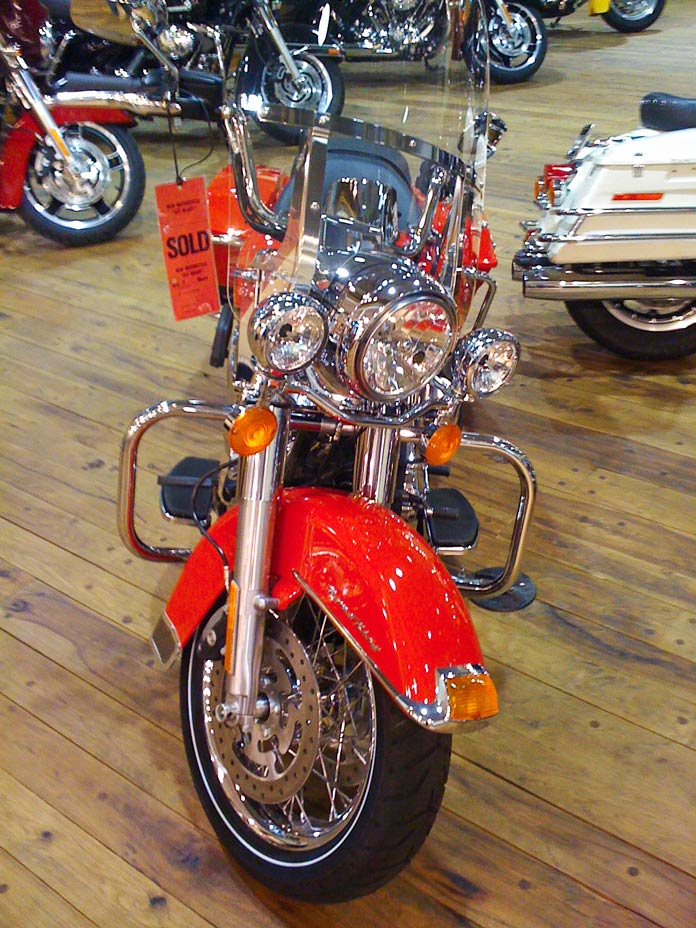
When I turned 15, I got a part-time job in a local factory and began putting aside a little money every week toward the purchase of a motorcycle. After three years of saving, the money instead went toward my college fund. It was a bitter sacrifice, but for better and worse, pragmatism had taken its foothold.
It was 1979 before I had another opportunity to consider motorcycle ownership. I was finally out of school – no more tuition, and a paycheck with just enough blue sky in it for a monthly bike payment. After my first day on the job, I went directly to the neighborhood Harley dealer and sat on a Sportster. In fact, I visited motorcycle dealers every evening that week.
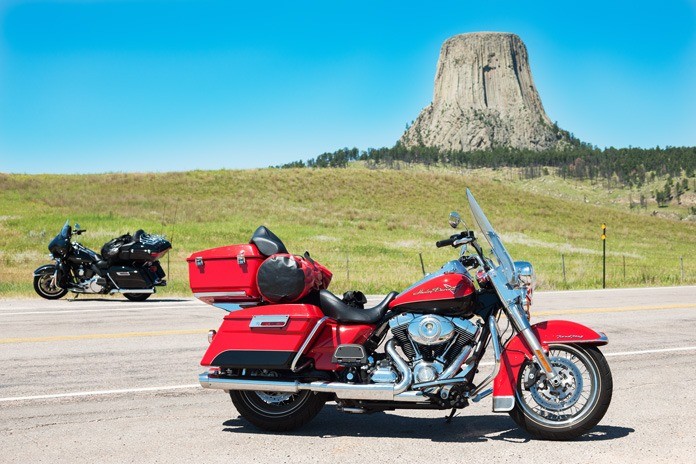
A lot had changed in a few years. Norton and BSA were gone, and Triumph had one foot in the grave. Ducati, Moto Guzzi, and BMW were exotic, expensive, and hard to find. Japanese bikes were everywhere, and it was easy to see why. They offered performance, reliability, and affordability.
I longed for that Sportster, but the pragmatist inside me was whispering its now-familiar mantra, “Where is the value?” I bought a 1979 Honda 750K instead.
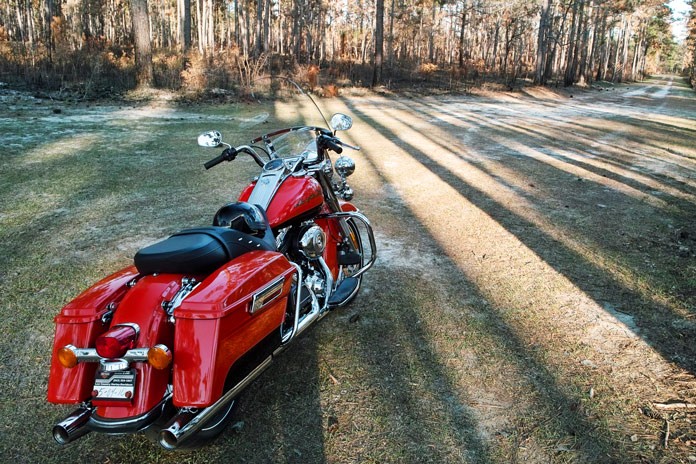
By the late 1980s, Harley-Davidson had outrun its shoddy AMF-era reputation along with the embarrassment of tariff protection. The company was re-animated with skillful marketing and product placement converging with renewed nostalgia for things American. I still longed for a Harley, but a new obstacle began to creep up: the type of people buying the bikes.
I always saw motorcycling as a refuge of the workingman – especially Harleys – and a bike was frequently the only decent thing you owned. You turned your own wrenches as best you could, and you rode with your best mates, rain or shine.
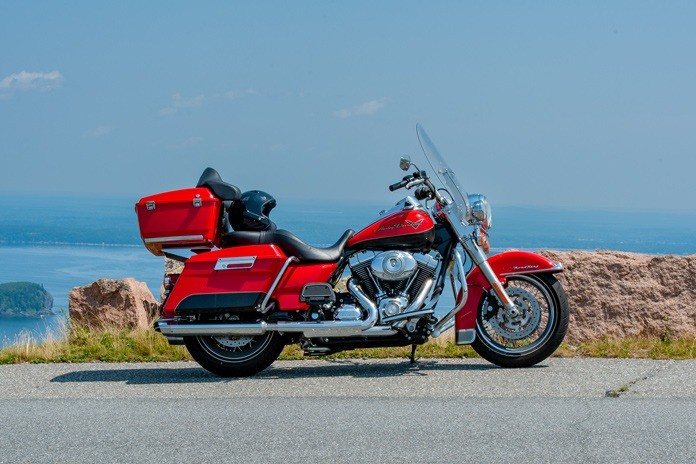
But many of the people who were then buying Harleys were white-collar dandies, and I objected to the MoCo courting them. Demand for the bikes pushed prices over MSRP. Formerly small and intimate dealerships built extravagant and impersonal emporiums, stuffing them with Harley-branded merchandise from T-shirts to neckties. So I waited. For a long time, I waited.
Decades and hundreds of thousands of motorcycling miles passed. During this time, I owned many different brands, and every time I made a buying decision, I first thought of Harley-Davidson. However, I always chose motorcycles from other companies.

Then came the Great Recession. By 2009, Harley’s Rococo period was coming to a close. The lavish dealerships were desperate for customers, and bikes had to be discounted to find buyers. An excellent new touring platform had recently been introduced. Now was the time!
I scrambled to sell the bikes that had accumulated in my garage, along with a vintage Formula Ford racecar. With pockets full, I headed to the local H-D dealership. Walking down the aisles of new bikes, a bright red 2010 Road King whispered to me.
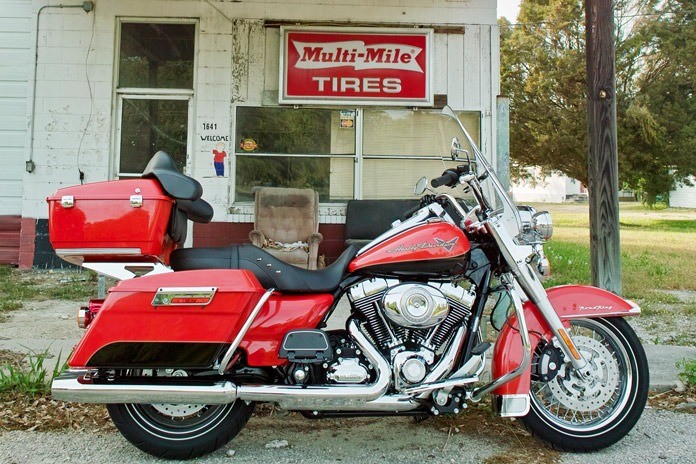
To quote Shakespeare: “The wheel is come full circle, I am here.”
It’s been 15 years since that day, and Scarlett and I have been to 47 states together through a lot of thick and thin. She has graciously shared the garage with whatever other bikes have caught my fancy, like the Ducati Multistrada 950S I currently own. They come and go, but Scarlett remains.
All types of motorcycles have passed through my garage over the last 40 years, and there always seems room for another interesting bike that just needs a little attention. Limitations on space and money are ever-present, and usually when one comes, one must go. But the one that will never be rotated out is Scarlett.
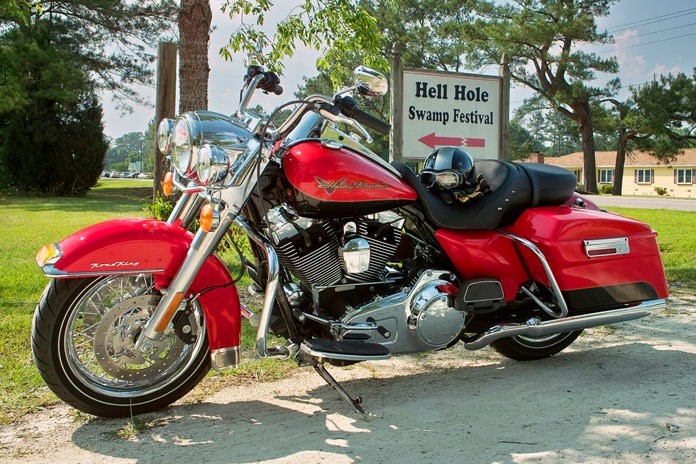
Enjoyment of traveling is about companionship too, in flesh and blood and iron. Just as I only want to travel thousands of miles with a friend, the same goes for a motorcycle. So let me assess Scarlett like I would a friend.
- She’s soulful. The best sound in motorcycling along with a reassuring vibration that lets you know you’re not on a sewing machine.
- She’s beautiful. Long and low, beautiful lines, proudly naked, with impeccable paint and chrome.
- She’s classic. A refinement in a continuum of motorcycles dating all the way back to the 1940s.
- She’s simple. Air-cooled. No ABS. One analog gauge. Belt drive. Friction-wheel cruise control.
- She’s reliable. Like a stone, but never far from the closest Harley dealer if needed.
- She’s flexible. The full coverage windshield can be snapped on or off in seconds, changing the entire vibe of the bike from stately tourer to diesel locomotive.
- She’s accessible. No expansive shrouds of plastic to remove, and assembled with fasteners that can be replaced at the local hardware store in a pinch.
- She’s comfortable. Her sit-up-and-beg riding position takes getting used to, but 1,000-mile days are doable and have been done.
- She’s heavy. Think positive – those vicious Plains crosswinds won’t be pushing you off your line.
- She’s underpowered. Yep, but decent torque and sensible gearing makes the most of what’s available.
- Her handling is lackluster. Much can be overcome by rider skill and familiarity with the bike.
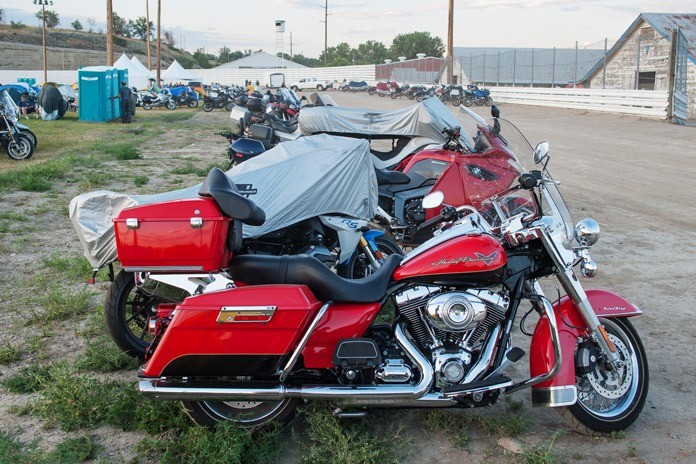
No friend is perfect, and no bike is perfect. I’m interested in how well things work, but I’m even more interested in how they make me feel. Just looking at Scarlett, I can feel a willing heart and an undeniable soul.
Any shortcomings are accepted as soon as I throw a leg over. After all, no one gets lost in the music of Aretha Franklin and critiques, “If only she could dance too.”

